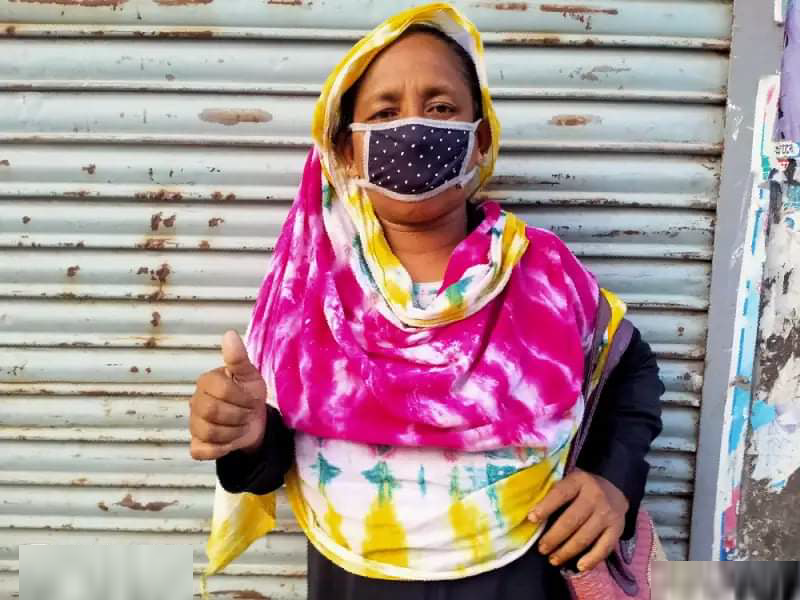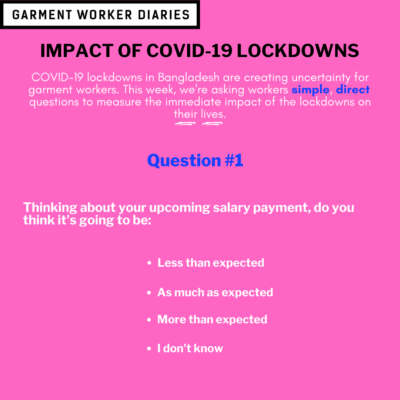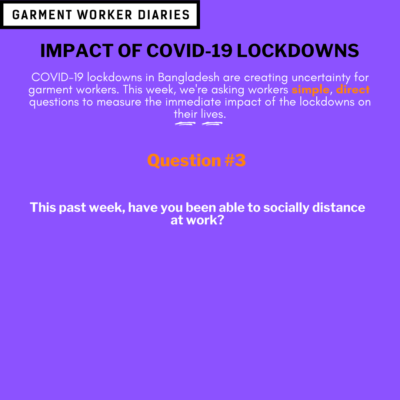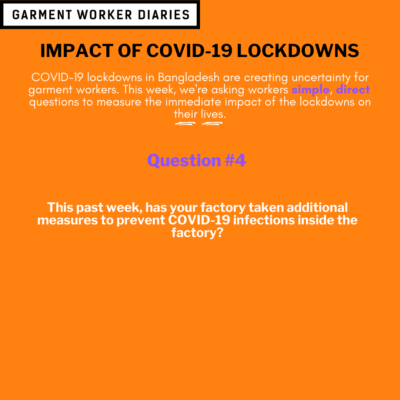It’s been an eventful couple of weeks for garment workers in Bangladesh. After a brief lifting of the countrywide COVID-19 restrictions for celebrations of Eid al-Adha that allowed workers to go back to their hometowns and villages, the country imposed a strict lockdown starting on July 23, 2021, in response to an increasing number of COVID-19 cases and the spread of the Delta variant in the country. This put an end to the special exemption that had permitted garment factories to continue to operate amid other restrictions. For the first time since April 2020, factories in the RMG sector were not allowed to open, but not for long. With global demand for garments growing and the country seeing a surge in orders, the factories successfully advocated for the lockdown restrictions on the sector to be lifted—ahead of schedule factories were allowed to resume operations on August 1, 2021.
But do we know how workers feel about any of this? With many workers back in their home villages at the time of the announcement, were they able to go back to work on such short notice? Did they do so safely? Do they feel comfortable going to work under current conditions? Have factories implemented measures to prevent the spread of COVID-19 in their facilities? Will the workers’ pay be affected by the lockdown? And will they work excessive hours to make up for “loss time”? These are complex times for the workers: while many people agree that workers cannot afford not to go to work, it is also the case that many workers wouldn’t be able to afford a health emergency if they contracted an illness at their factory.
The Garment Worker Diaries is uniquely positioned to get answers to these types of questions during times of hardship. The project is built on the premise that in order to facilitate what the industry (fortunately) increasingly advocates for (increased transparency, raising workers’ visibility in the apparel supply chain, and including their voice in the industry’s decision-making process), we need to first take the time to get to know them. If we are to listen to and include them, we need to create safe spaces where they feel comfortable sharing their realities and circumstances without fearing repercussions. Workers trust us to be there every week, week in and week out, hearing them as they express their preferences and concerns even in the most mundane of times. So, in extraordinary times like these, there’s no equal to the GWD approach if we want to get workers’ unfiltered and unbiased opinions and perspectives.
During data collection this week we will be asking workers a series of questions related to their experience with the recent lockdown restrictions, the sudden lifting of the lockdown and how traveling home for Eid might have impacted their ability to get back to work. We will also ask them how they feel about going back to work and what measures have been put in place to ensure their health and safety.
Note: Above are some of the lockdown-specific questions we’ll be asking garment workers this week. Check back in a few weeks to see the results, and how the COVID-19 lockdowns have impacted workers’ lives.
In addition, through our regular set of questions, we’ll continue to keep track of the rate at which workers in our study sample experience COVID-19 symptoms and whether they are tested and/or vaccinated. We’ll also be able to know the number of hours spent working inside the factories in the coming weeks and whether that is properly reflected in their upcoming salaries. Also, with the garment industry being one of the few industries currently allowed to continue operations in the country, we’ll also be able to assess whether the dynamics inside and outside of the household change during this time.
Is there anything YOU would be interested in knowing more about? Have we missed something important? We encourage you to use the GWD channel to get the knowledge, context, and information you need, directly from workers, to make better data-driven decisions. This is as good a time as any to start engaging directly with workers. We invite you to contact us at questions@workerdiaries.org with any questions or topic that you would be interested in exploring. If we already have data on the topic, we’ll make it available to you, and if you are interested in something that is yet to be covered, we’ll work with you to create questions to add to the survey and send you gender disaggregated data within two to three weeks.
The Garment Worker Diaries conducts weekly interviews with a sample of 1,300 workers. These workers are employed in factories spread across the five main industrial areas of Bangladesh (Chittagong, Dhaka City, Gazipur, Narayanganj, and Savar). Just over three-quarters of the working respondents are women, roughly representative of workers in the sector as a whole.
Note: Banner photo courtesy of a garment worker in Bangladesh.




